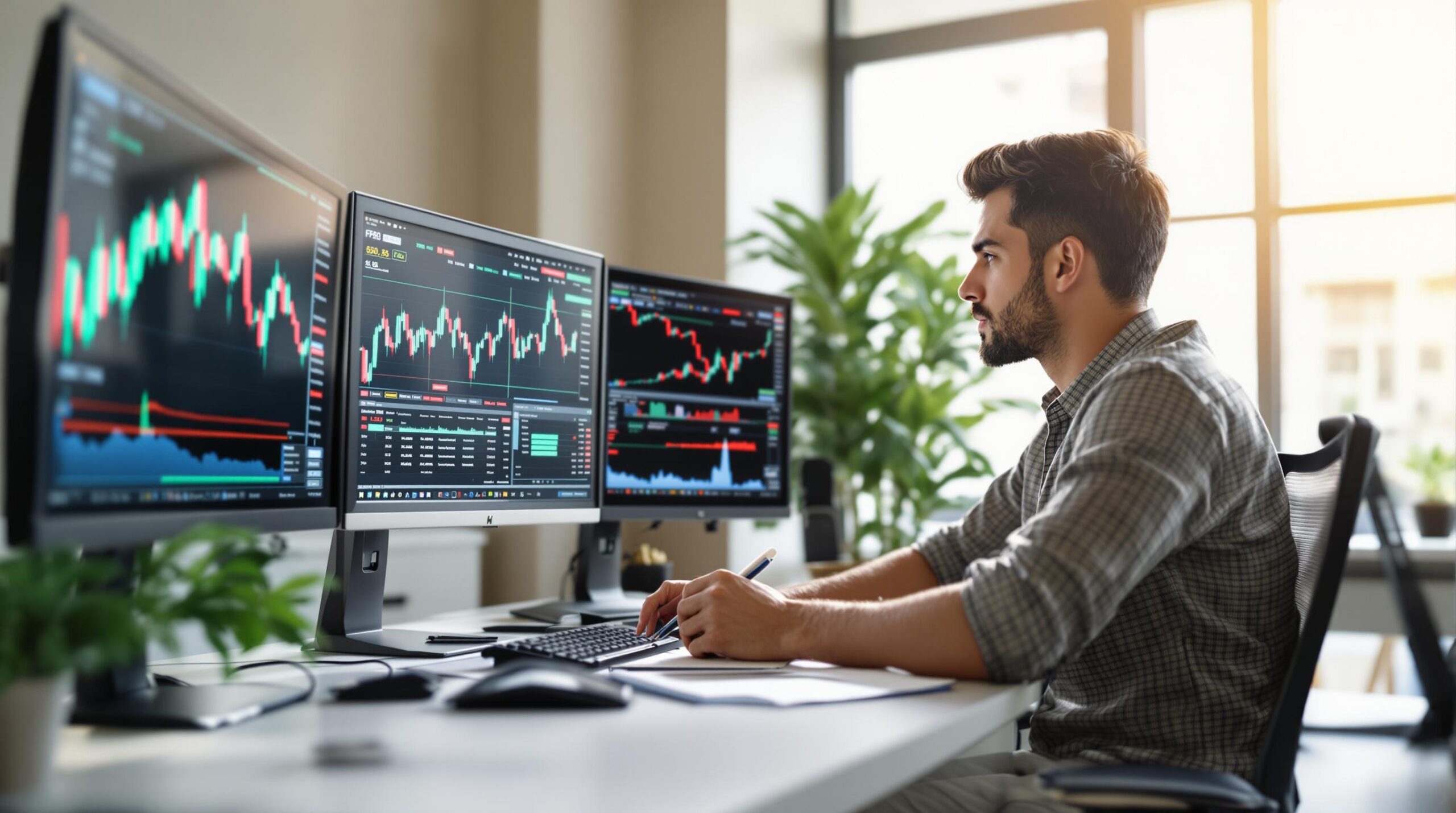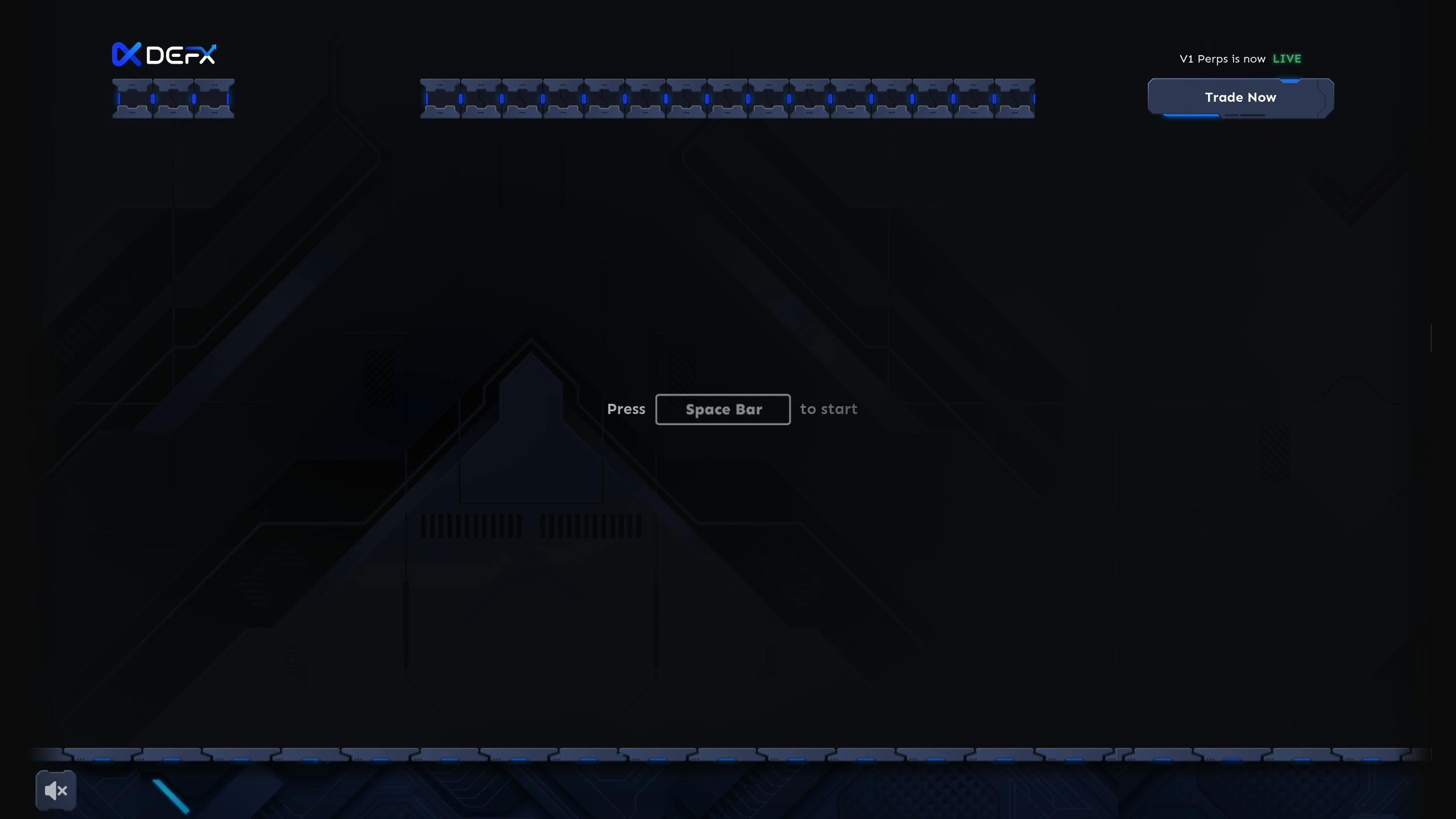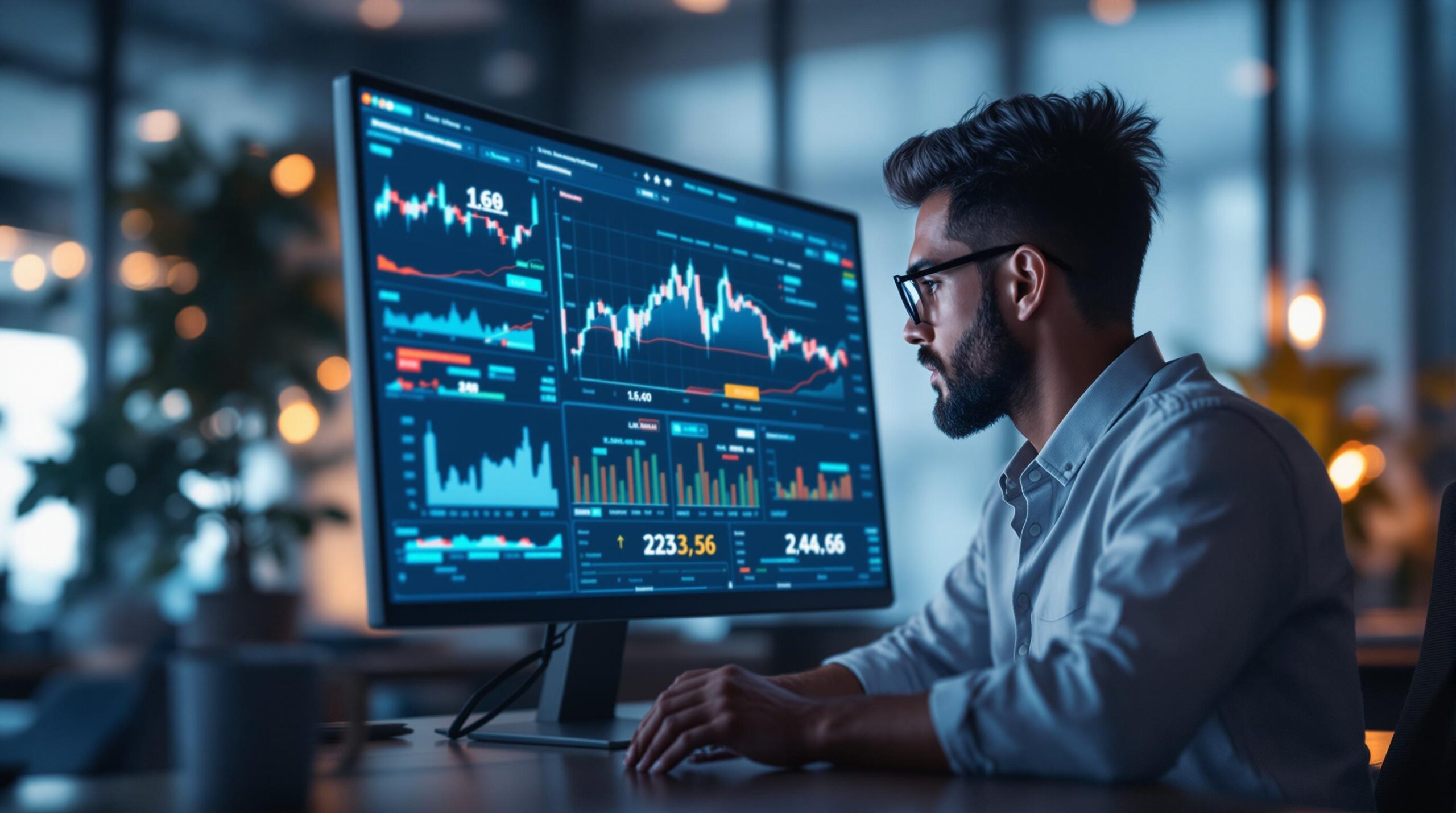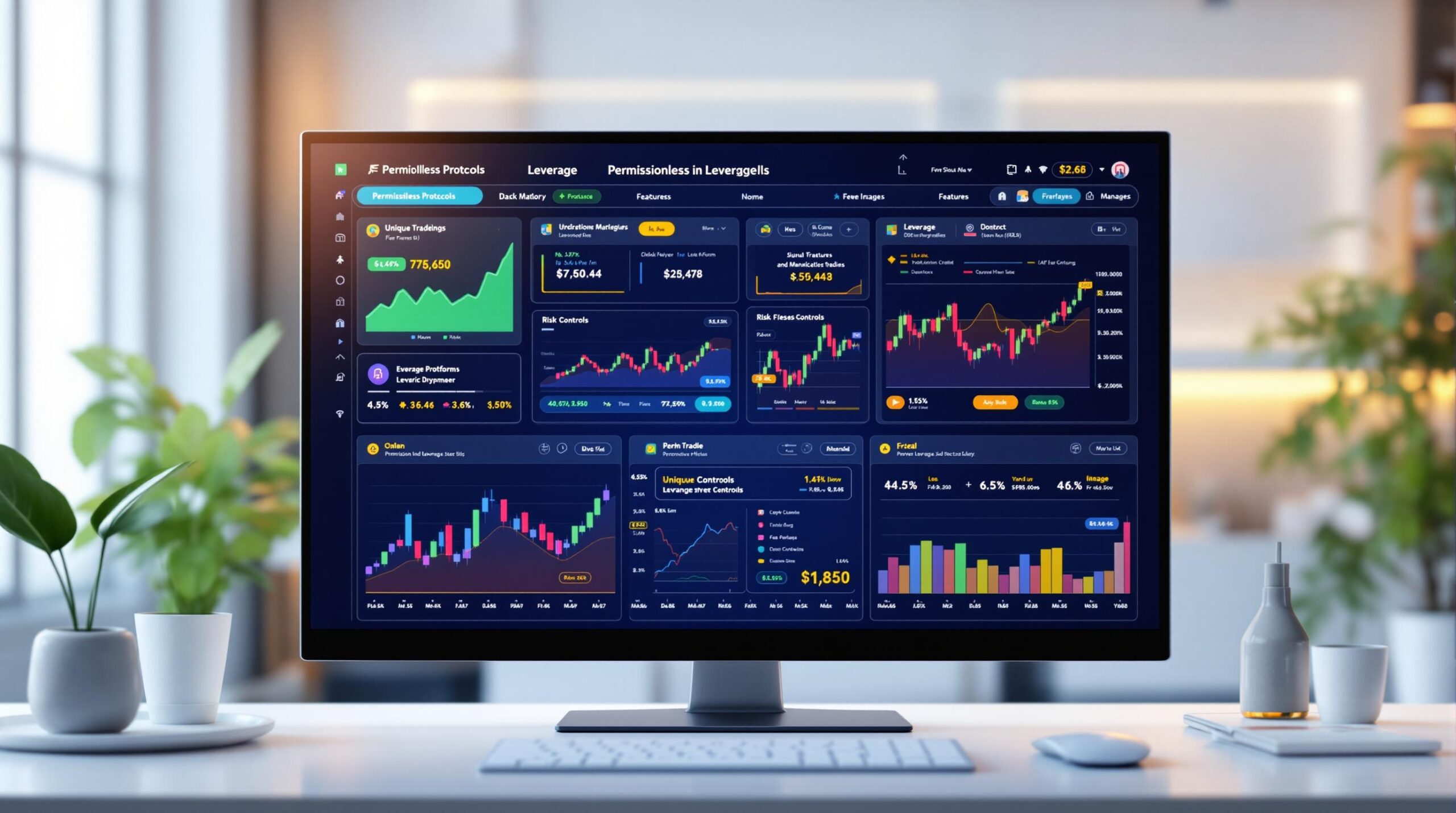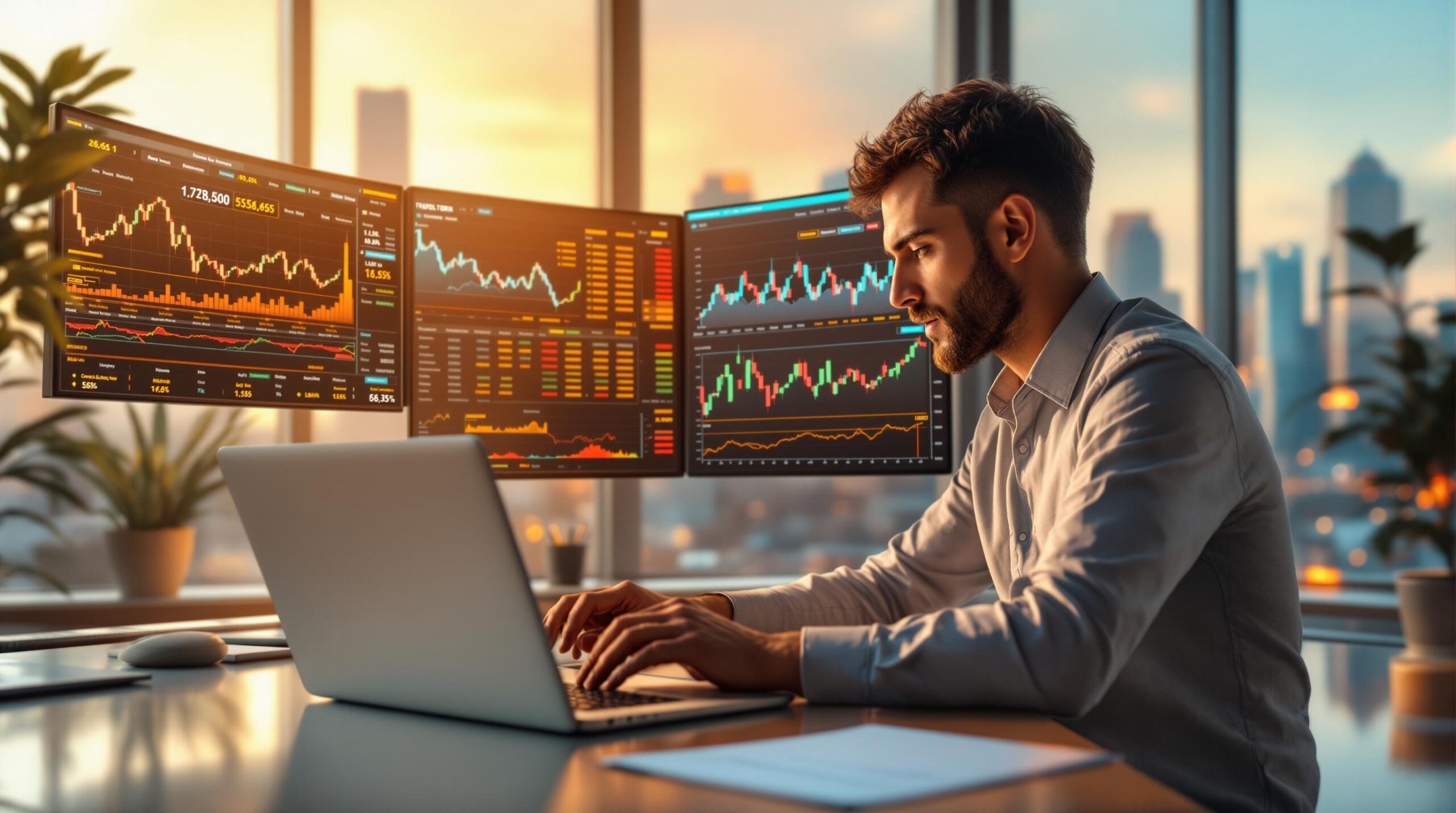Leverage trading is risky but manageable with the right mindset. Here’s how you can build resilience and improve your trading performance:
- Key Risks: Emotional decisions, liquidation anxiety, overconfidence, and revenge trading are common pitfalls. Over 70% of retail traders lose money due to these factors.
- Mental Strength: Techniques like mindfulness, stress management, and adhering to risk rules can reduce emotional reactions by 40%.
- Risk Management: Use the 1% rule, stop-loss strategies, and adjust leverage based on market conditions to protect your capital.
- Daily Habits: Structured routines, pre-trade planning, and trade journaling improve decision-making and reduce errors.
- Tools: Automated trading rules, analytics, and platforms with instant risk controls help you stay objective.
Quick Tip: Start with small leverage (5-10x), focus on emotional control, and track your progress to avoid costly mistakes.
Managing Trading Psychology
Common Mental Traps in Leverage Trading
Leverage trading brings intense psychological challenges, often leading to three major pitfalls that can disrupt a trader’s mindset:
Liquidation Anxiety: The fear of margin calls can freeze decision-making, especially in volatile markets. This often results in either closing positions too early or holding onto losing trades for too long [2][3].
Overconfidence Bias: After a streak of wins, traders may overestimate their ability to predict the market. This false confidence can lead to disastrous outcomes, such as the $1.3 billion collapse of Barings Bank [2].
Revenge Trading: Losses can push traders into a risky cycle of trying to recover quickly, leading to even bigger losses and added mental stress [2][6].
| Mental Trap | Warning Signs | Impact on Trading |
|---|---|---|
| Liquidation Anxiety | Constantly checking positions, poor sleep | Premature exits, missed opportunities |
| Overconfidence | Increasing position sizes after wins | Ignoring stop-losses, excessive risks |
| Revenge Trading | Trading more frequently after losses | Escalating losses, emotional exhaustion |
Methods to Handle Trading Pressure
Overcoming these challenges requires intentional strategies that help traders stay grounded:
Automated Risk Controls: Research shows that 89% of successful traders use pre-set take-profit and stop-loss orders to avoid emotional decisions during market swings [5]. This approach reflects Paul Tudor Jones’ emphasis on protecting capital.
Systematic Cooling-Off Periods: Many professional firms enforce breaks after multiple losses. For instance, Finotive Funding found that taking a 24-hour pause after three consecutive failed trades significantly lowers emotional trading incidents [3].
Mindfulness Practice: Studies highlight that incorporating breathing exercises during trading reduces cortisol levels by 23%, leading to clearer decision-making [5].
Mentorship Programs: Regular guidance from seasoned traders can provide much-needed clarity during stressful market conditions [3].
To track progress in managing trading psychology, traders often monitor specific metrics like:
- Staying within risk limits (<5% deviation) [1][5]
- Adhering to daily routines
- Maintaining consistent position sizes during drawdowns [2]
These measurable benchmarks help traders stay objective and address psychological weaknesses before they escalate into bigger problems.
Daily Habits for Mental Strength
Pre-Trade Planning Steps
Success in leverage trading often begins with a solid daily routine. Studies highlight that traders who stick to structured pre-trade practices see a 23% improvement in risk-adjusted returns over six months [3][7].
A well-rounded pre-trade routine involves assessing market volatility with tools like ATR indicators and carefully calculating position sizes [2][3]. It’s also crucial to double-check margin settings before entering the market to keep risks under control.
| Planning Component | Action Items | Purpose |
|---|---|---|
| Market Analysis | Review ATR, volatility metrics, and economic calendar | Ensure favorable trading conditions |
| Position Planning | Calculate position size and verify leverage ratios | Avoid excessive risk exposure |
| Technical Setup | Define entry/exit points and confirm support/resistance levels | Stick to objective strategies |
This preparation step helps traders stay accountable and focused before diving into market analysis.
Learning from Trade Results
After executing trades, analyzing results is key to improving future performance. Research from the Fib Institute shows that traders who document their trades make better decisions over time [7].
Key Metrics to Track:
- The reasoning behind entry/exit points compared to actual price movements
- Margin usage as a percentage
- Emotional state during the trade
- Effectiveness of stop-loss settings
By reviewing these metrics, traders can spot patterns and correct recurring mistakes.
Stress Management Techniques
Handling stress is essential for maintaining mental strength in trading. Sleep-deprived traders, for example, are 27% more likely to make errors in leverage calculations, according to the Journal of Behavioral Finance [5].
Effective Stress-Relief Practices:
- Time-Block Trading Sessions: Keep sessions to 90 minutes with regular breaks to stay sharp.
- Physical Activity: Morning exercise has been shown to enhance decision-making during trading [4].
- Stress Reduction Techniques: Practice box breathing before trades and grounding exercises during market volatility [3][7].
Incorporating these strategies can help traders stay focused and make better decisions under pressure.
Trading Psychology: How to Build a Resilient Trading Mindset
sbb-itb-dd9e24a
Risk Management Basics
Managing risk effectively helps protect both your capital and your mental clarity. A solid risk management framework minimizes decision fatigue while keeping your trading positions secure.
Stop-Loss and Position Size Rules
At the core of risk management lies the 1% rule paired with smart stop-loss strategies. In crypto markets, where volatility is high, stop-loss levels should typically be set:
- For long positions: 2-3% below key support levels
- Using market conditions: 1.5-2 times the average true range (ATR) [2][3]
The formula for calculating position size is:
Position size = (Account balance × Risk %) ÷ (Entry price − Stop loss)
Isolated vs. Cross-Margin: Key Differences
Choosing the right margin type can make or break your risk management plan. Here’s a quick comparison of isolated and cross-margin systems, as seen in Defx’s implementation:
| Feature | Isolated Margin | Cross-Margin |
|---|---|---|
| Risk Scope | Limited to a single position | Exposes the entire portfolio |
| Capital Efficiency | Lower, requires separate margins | Higher, uses shared collateral |
| Best Use Case | High-volatility trades | Diversified strategies |
| Liquidation Impact | Affects one position only | Impacts all positions |
For example, trading BTC with isolated margin ensures that a market drop only impacts the collateral tied to that specific trade [3][5].
Adjusting Leverage for Market Conditions
Tailoring leverage to current market conditions is essential. Use these metrics to fine-tune your approach:
Volatility-Based Scaling:
- Cut leverage by 50% if the volatility index exceeds 30.
- Cap leverage at 10x when the market correlation index is higher than 0.7.
- Reduce leverage further if liquidity is thin – halve it when order book depth falls below $1M [1][3].
For instance, during the banking crisis in March 2023, Bitcoin’s volatility spiked to 120%. Experienced traders responded by reducing leverage from 20x to 5x [1][9].
Trading Tools for Better Control
Tools play a critical role in trading by offering objective data and automation. They help implement risk management strategies effectively, turning theoretical principles into practical safeguards. Modern trading platforms also address emotional biases by integrating automated features.
Selecting a Leverage Trading Platform
When picking a platform for leverage trading, look for features that improve control and ease psychological stress. Here’s a breakdown of important technical aspects:
| Feature Category | Key Capabilities | Benefit to Mental Well-Being |
|---|---|---|
| Execution Speed | Sub-second order execution | Reduces stress during rapid market swings |
| Risk Controls | Instant liquidation previews | Encourages confident and informed decisions |
| Analytics | Historical performance dashboards | Highlights patterns to avoid emotional trades |
| Margin Options | Granular margin controls, like Defx’s per-position collateral allocation | Helps manage and limit potential losses |
For instance, Defx uses a Solana-based system that processes stop-loss orders in under 100ms, ensuring no delays during sudden market shifts.
Using Automated Trading Rules
Automated trading tools can significantly reduce the mental fatigue associated with manual trading. Studies, such as Finotive 2024, show a 63% drop in emotional exhaustion when using automation [3].
Key Automation Strategies:
- Define clear entry and exit rules based on specific technical indicators.
- Automate position sizing to align with your risk tolerance.
- Use trailing stop-losses that adjust dynamically with market changes.
- Set price alerts to avoid constantly monitoring charts.
Real-time analytics keep you objective by offering clear data to evaluate your strategies. Implement ‘set-and-forget’ rules – predefined conditions that execute automatically – eliminating the need for split-second decisions [1][5].
Conclusion: Keys to Long-Term Trading Success
Building long-term success in trading relies on three key areas: psychological systems, effective risk protocols, and measurable benchmarks. According to recent FINRA data, 70% of successful long-term traders attribute their achievements to maintaining disciplined risk management practices [8].
Mental Strength Through Systems
Advanced trading platforms have significantly improved how traders manage their emotions. By reducing emotional interference, these tools help traders stay mentally resilient and focused.
Evolving Risk Management
Risk management today is more than just setting stop-losses. Leading traders now use strategies like dynamic leverage adjustments, opting for lower leverage (5-10x) during volatile times [1][9]. This approach works – traders who revise their strategies quarterly see a 23% higher chance of longevity [1].
Measuring Success
Tracking performance through clear metrics is essential for improving outcomes. Here are some key metrics to monitor:
| Metric | Target Threshold | Benefit |
|---|---|---|
| Monthly Maximum Drawdown | <15% [3] | Reduces emotional stress from losses |
| Consistency Ratio | >70% profitable months [5] | Builds confidence over time |
| Trading Rule Adherence | <5% violation rate [2] | Ensures disciplined execution |
Ray Dalio’s concept of "radical transparency" has reshaped how professional traders analyze mistakes. His team uses detailed trade reviews to pinpoint psychological errors, mirroring the benefits of trade journaling for self-improvement [2]. This type of reflection creates a structure for ongoing growth.
Technology’s Impact on Stability
Modern trading tools provide safeguards like pre-set liquidation thresholds, which help traders avoid emotional decision-making during high-pressure moments [2].
FAQs
What is the 1% rule in trading?
The 1% rule suggests limiting your losses to 1% of your account per trade. For example, if you have a $10,000 account, you would cap your loss at $100 per trade, no matter the leverage. This becomes even more important when using leverage. A 5% price move with 10x leverage could lead to a 50% profit – or loss [2][6].
How do I manage emotional pressure in leverage trading?
Managing stress is crucial in leverage trading. Successful traders follow specific strategies to stay disciplined:
| Technique | How It Works | Why It Helps |
|---|---|---|
| Cooling-off Period | Take a 24-hour break after 3 straight losses | Prevents impulsive decisions |
| Daily Loss Limits | Set automatic restrictions at loss thresholds | Protects your capital |
| Risk Calculation Formula | Use (Account Balance × 0.02)/(Stop Distance) | Reduces big drawdowns by 41% |
These methods help traders stick to their plans and avoid emotional reactions.
What’s the difference between isolated and cross-margin trading?
The type of margin you choose directly affects your risk of liquidation. With isolated margin, the risk is limited to the specific trade, making it a better choice for volatile assets such as pre-launch tokens. Platforms like Defx allow traders to manage this risk by offering precise control. On the other hand, cross-margin uses your entire account balance to cover losses, which can be riskier but offers flexibility.
How can I improve my trading psychology?
To handle the mental challenges of trading, professionals use structured methods. A big part of this is maintaining a trading journal, as suggested in Daily Habits for Mental Strength. Here’s what that involves:
- Reviewing decisions: Regularly evaluate your trades to spot patterns.
- Tracking emotions: Write down how you felt during trades to identify triggers.
- Stress management: Use techniques to stay calm and focused.
Stress can lower your trade execution accuracy by 7% [7], so staying emotionally balanced is key to making better decisions.
